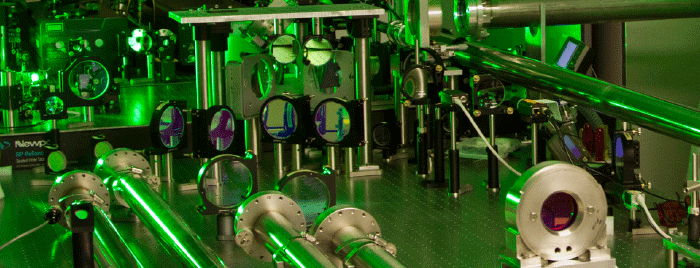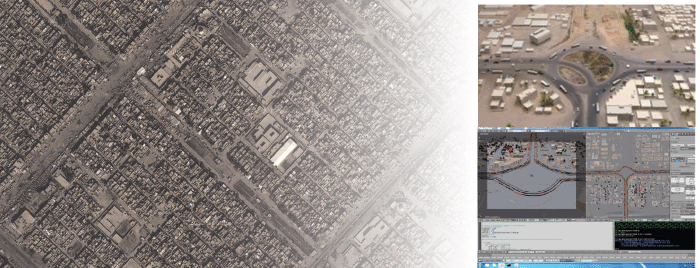Exploiting Powerful Lasers

A research group led by Douglass Schumacher at The Ohio State University are conducting simulations of experiments being conducted on powerful lasers, such as Ohio State’s 400 Terawatt Scarlet laser, shown here.
Since 1987, OSC has been providing our clients services in four areas, or functions:
Supercomputing. OSC provides the computational power and storage that scientists need to meet their research goals. Whether researchers need to harness the incredible power of a parallel processor cluster to better understand deep space, a vector processor machine to do weather modeling, or a mid-size shared memory processor system to model the human heart, OSC has the hardware and software solutions to meet their needs.
Research. A staff of high performance computing and networking research experts maintain active research programs in HPC and Networking, Homeland Security and Defense, Environmental Sciences, Engineering and Life Sciences. Our goals are to lead science and engineering research efforts, assist researchers with custom needs and collaborate with regional, national and international researchers in groundbreaking initiatives.
Education. OSC has a national reputation for its training and education programs. Staff teach faculty and student researchers through scientific computing workshops, one-on-one classes, and web-based portal training. Ohio students gain exposure to the world of high performance computing and networking during our annual summer institutes for young women in middle school and for junior and senior high school students. And, the statewide, virtual Ralph Regula School of Computational Science coordinates computational science and engineering education activities for all levels of learning.
Cyberinfrastructure. The Ohio Supercomputer Center’s cyberinfrastructure and software development researchers provide the user community with various high performance computing software options. This variety enables researchers to select parallel computing languages they most prefer, and just as important, it creates a test bed for exploring these systems. By taking a holistic approach to generating efficient supercomputing applications for researchers, the Center’s cyberinfrastructure and software development research capitalizes on all the components within the cycle of innovation — development, experimentation, and analysis - and continuously improves the services provided.

A research group led by Douglass Schumacher at The Ohio State University are conducting simulations of experiments being conducted on powerful lasers, such as Ohio State’s 400 Terawatt Scarlet laser, shown here.

Dhabaleswar Panda at The Ohio State University led a group in studies of communication runtimes on systems, including the HP-Intel Xeon Oakley Cluster at the Ohio Supercomputer Center.

A research group led by Brian Rigling at Wright State University and Todd Rovito at the Air Force Research Lab developed a simple synthetic intersection and synthetic straight test track, based upon Sadr City, Iraq. The comparison view is a satellite image of the actual intersection.

Professor Giorgio Rizzoni, graduate student Casie Clark and the Venturi Buckeye Bullet 3. The VBB3 team recently tested the new streamliner at Wendover, Utah. Clark, the team aerodynamicist, used Ohio Supercomputer Center resources to make numerous studies of the vehicle, including a pressure contour (top) and a velocity contour (bottom) at 300 miles-per-hour. (Photo credit: Denis Broussard, Venturi Automobiles)